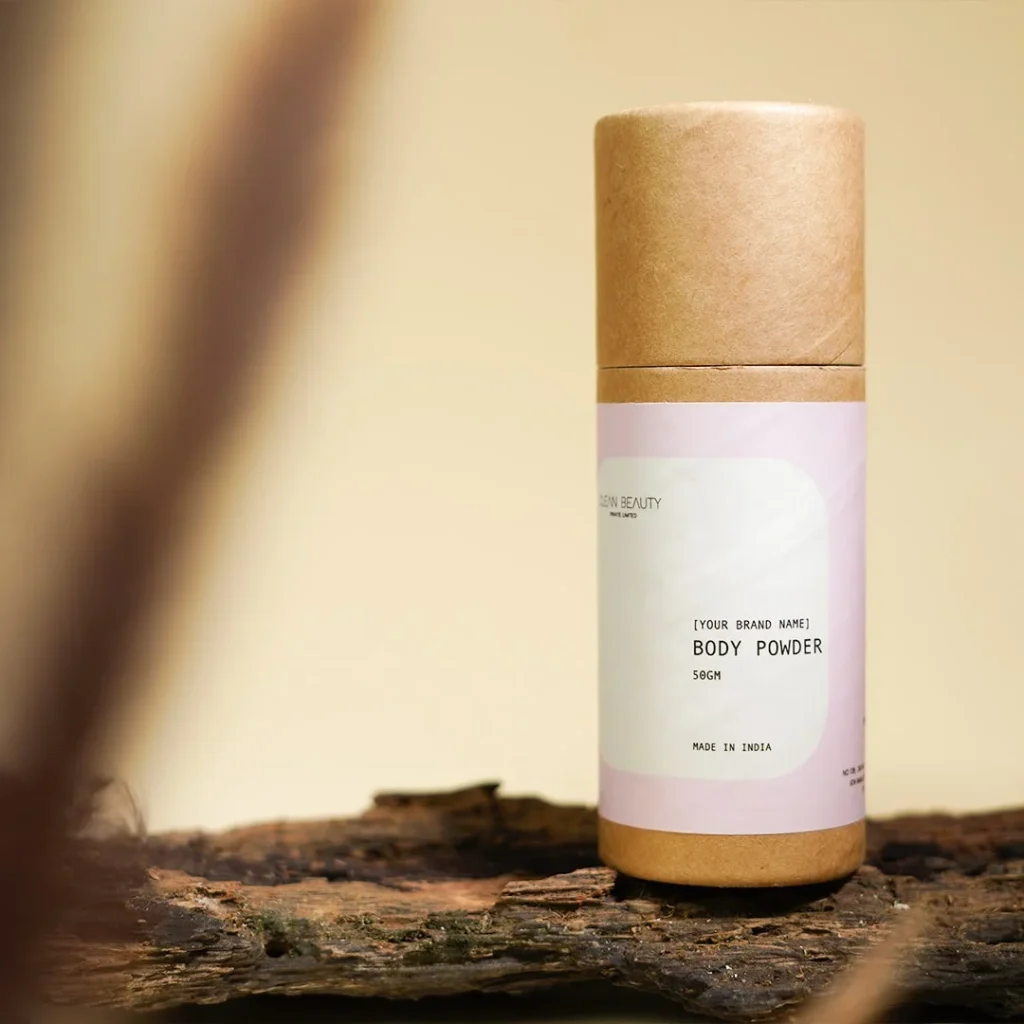Creating a skincare brand is more than choosing pretty packaging or catchy names. It’s about building a story people want to be a part of. In a saturated market, successful skincare branding is what turns a product into a trusted ritual and a business into a movement.
Whether you’re launching a fresh label or developing your line through private label manufacturing, understanding branding fundamentals can help you build a strong foundation, attract loyal customers, and set your business up for long-term growth. This blog will guide you through the essentials of skincare brand development, with actionable insights for both new and growing businesses.
What Is Skincare Branding?
At its core, branding is how your customers perceive your skincare line. It not only includes your name, logo, tone of voice, and product packaging, but also includes intangible aspects like trust, values, and emotional connection.
Good skincare branding tells a clear story. It says
- Who the brand is for.
- What the product promises.
- Why the customer should care.
A strong brand creates loyalty. And in skincare, where choices are deeply personal and driven by results, trust plays a critical role.
Step 1: Define Your Brand Purpose
Start by answering a simple question: Why does your brand exist?
Is it to offer clean, affordable skincare for sensitive skin? Is it to bring Ayurvedic wisdom to modern routines? Or perhaps to celebrate self-care as a form of emotional healing?
This purpose becomes your north star. It helps guide product development, packaging decisions, and how you speak to your customers.
Key elements of your brand purpose
- Core mission and values.
- Target audience (age, skin concerns, lifestyle).
- The problem your brand solves.
- Unique take or philosophy.
Skincare brand development begins with clarity, not clutter.
Step 2: Develop a Unique Brand Identity
Your brand identity is how you visually and verbally communicate your purpose.
It includes:
- Brand name.
- Logo and brand colours.
- Tagline.
- Typography and design style.
- Tone of voice (friendly, clinical, luxurious, etc.).
When building this identity, consistency is key. A calm, nature-inspired brand shouldn’t suddenly use neon packaging and edgy slang. Everything should feel cohesive and intentional, from website copy to Instagram captions.
This is especially important when you’re building through private label branding. Even if your formulations come from a third-party manufacturer, your brand identity makes the product uniquely yours.
Step 3: Position Your Brand Thoughtfully
Brand positioning means choosing where your brand stands in the customer’s mind and the market.
Ask yourself
- Are you a luxury skincare label or an everyday essential?
- Are your products focused on clean ingredients, high performance, or heritage?
- Who are your closest competitors?
- What makes your product different from theirs?
Positioning is a blend of product quality, pricing strategy, packaging, messaging, and customer experience.
A strong position helps:
- Attract your ideal audience.
- Justify your pricing.
- Influence your marketing and packaging style.
At Clean Beauty, we work with brands across the spectrum, from spa essentials to influencer-led glow lines, and help them position their products with clarity and confidence.
Step 5: Create a Meaningful Customer Experience
Your brand doesn’t end with your product; It lives in every interaction with your customer.
Ensure that every touchpoint reflects your values
- Website design.
- Social media visuals and captions.
- Customer care tone.
- Unboxing experience.
- Product labels and ingredient transparency.
Skincare customers, especially Gen Z and millennials, care about brand ethics, ingredient clarity, and emotional storytelling. Create content that resonates, for example, behind-the-scenes videos, founder notes, ingredient education, testimonials, and rituals.
Small brands win when they feel human.
Step 6: Invest in Packaging That Speaks
Your packaging is your brand’s first impression. It tells customers what to expect: calmness, luxury, freshness, or innovation. But in skincare, it must also be functional, safe, and compliant.
Focus on
- Material (glass, HDPE, aluminium, kraft paper).
- Form factor (pump bottle, jar, tube).
- Label design (font, ingredients, claims).
- Legal declarations (per Indian cosmetic packaging laws).
At Clean Beauty, we help brands co-develop packaging strategies that are practical, compliant, and on-brand…even for small batches.
Step 7: Launch With Consistency and Confidence
Once you’ve defined your brand, product range, and identity, launch your brand with intention.
Don’t rush. A meaningful launch builds trust and sets the tone.
Prepare
- A clean, informative website.
- High-quality product photos.
- Clear skincare education.
- Social media presence with a regular posting strategy.
- Founder video or brand manifesto.
Offer transparency about ingredients, manufacturing practices, and usage benefits. Share your journey honestly. The skincare world doesn’t need perfection as much as it needs authenticity.
Step 8: Rebrand If You Need To
If your existing skincare brand feels out of sync, whether it’s due to unclear messaging, outdated packaging, or low traction, it’s okay to rebrand.
Rebranding may involve
- Updating your logo and visual identity.
- Clarifying your product positioning.
- Changing your tone of voice.
- Re-evaluating your product mix.
With private label branding, rebranding is not only possible, but it’s also practical. Clean Beauty supports packaging updates, new ingredient infusions, and repositioning strategies to help brands stay relevant.
Why Branding Matters in Skincare
Unlike fashion or food, skincare is deeply personal. People apply it to their face, their body, and use it on their children. Thus, they need to trust it. That trust comes not just from visible results, but from consistent, thoughtful branding.
Branding is your long-term moat in a competitive industry. Formulations can be copied. Price wars come and go. But a strong brand identity creates customer loyalty, referral power, and emotional connection.
So, before you launch your next product or pick your next Instagram font, pause and ask: Does this reflect who we are?
FAQs
1. What are the first steps in effective skincare brand development?
Start skincare brand development by defining your brand purpose, target audience, and niche. Build a strong identity and partner with a skincare manufacturer that aligns with your goals and values.
2. How important is brand positioning in the skincare industry?
Brand positioning is essential in skincare branding—it helps your brand stand out, attract the right audience, and build lasting loyalty through clear, consistent messaging.
3. What are some key private label branding tips for new skincare businesses?
Here are five practical tips
- Start with clarity: Know your brand’s voice, values, and target customer.
- Choose a flexible manufacturer: One that allows low MOQs and packaging support (like Clean Beauty).
- Customise wisely: Add small touches to standard formulations like fragrance, texture, and design to reflect your brand.
- Keep it consistent: From labels to Instagram, ensure a unified visual and verbal identity.
- Test and scale: Launch small, gather feedback, then expand based on real insights.
Private label branding is cost-effective and scalable when done with a long-term mindset.
4. How can I create a unique identity for my skincare brand?
Create your skincare branding identity by telling your brand story through visuals, messaging, and packaging that reflect your values and connect emotionally with customers.
5. What role does packaging play in successful skincare branding?
In skincare branding, packaging shapes perception. It must reflect your brand’s values, ensure functionality, and emotionally connect with your customers through design.
6. Can I rebrand an existing private label skincare line effectively?
Yes, rebranding is a smart skincare brand development move. Revisit your brand story, update visuals and tone, and partner with a manufacturer that supports low-MOQ relaunches.


